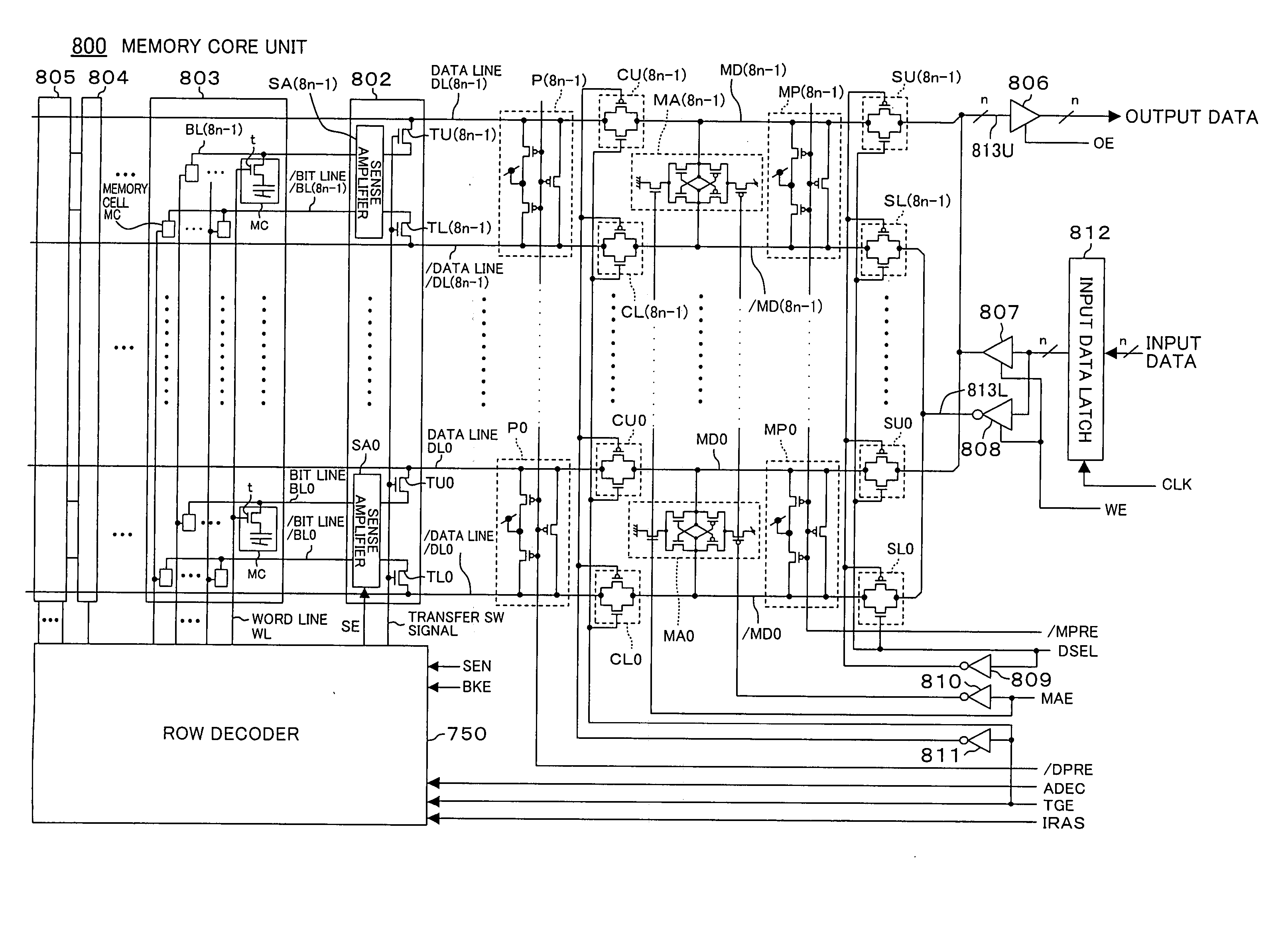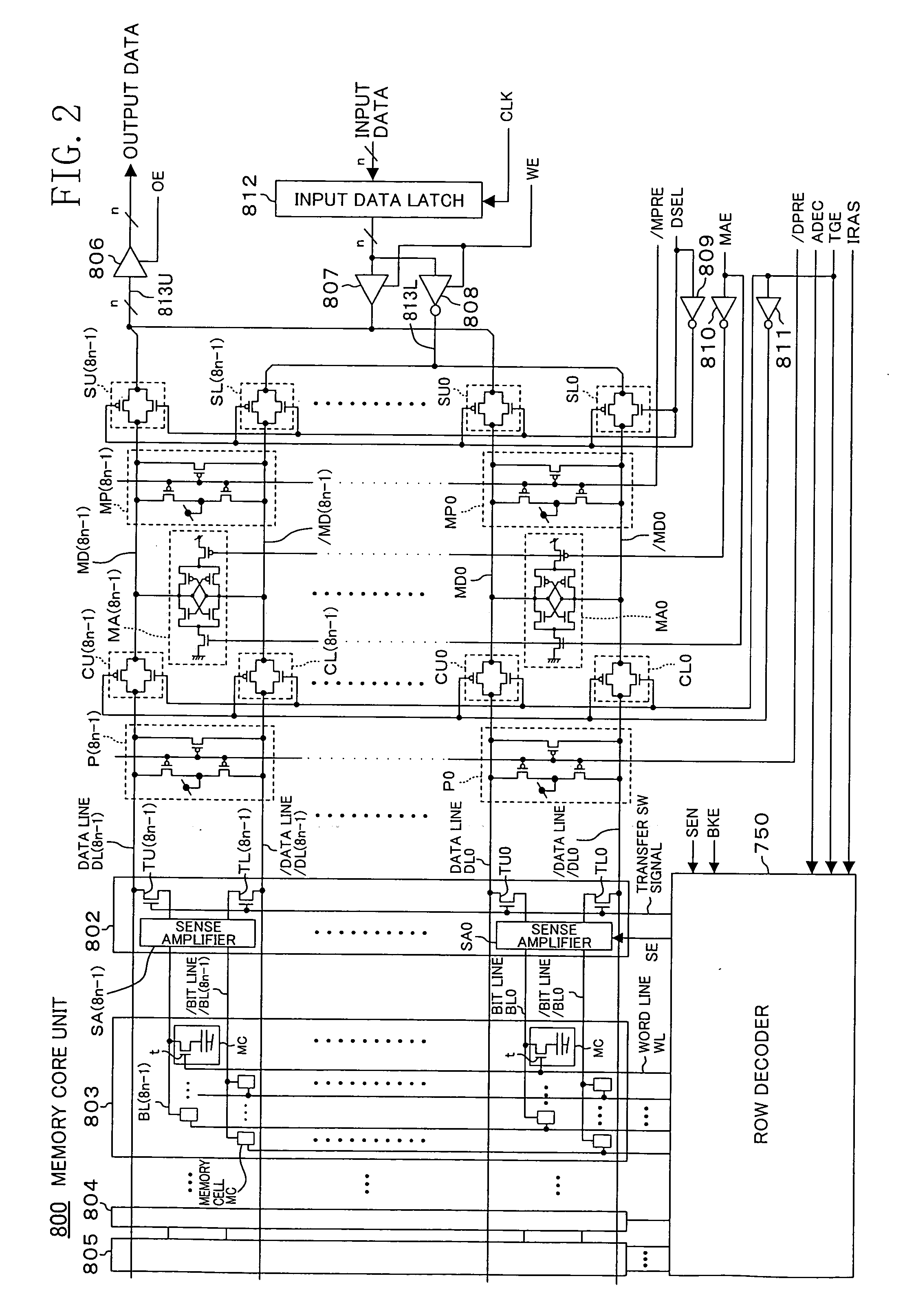Semiconductor device
a technology of semiconductor devices and memory cells, applied in the direction of information storage, static storage, digital storage, etc., can solve the problems of disadvantageous data storage and inability to perform a refresh operation for memory cells during this period, and achieve the effect of shortening the time necessary for this write operation and performing in a short tim
- Summary
- Abstract
- Description
- Claims
- Application Information
AI Technical Summary
Benefits of technology
Problems solved by technology
Method used
Image
Examples
Embodiment Construction
[0053] A DRAM (semiconductor device) according to a preferred embodiment of the invention will now be described with reference to the accompanying drawings.
[0054]FIG. 1 shows the architecture of the DRAM 900. In FIG. 1, the DRAM 900 includes a row address generation unit 100, a row control signal generation unit 200, a first column control signal generation unit 300, a second column control signal generation unit 400, a column address latch 500, a column address decoder 600, a row address pre-decoder 700 and a memory core unit 800.
[0055] The row address generation unit 100 receives, as shown also in FIG. 4, an external row address ERADR, a clock CLK, an address latch clock ADLCK described below and supplied from the row control signal generation unit 20.0, an address switching signal ADSEL and a count clock CNTCK, and generates and outputs an internal row address IRADR. Also, the row control signal generation unit 200 receives, as shown also in FIG. 3, the clock CLK, a reading row...
PUM
 Login to View More
Login to View More Abstract
Description
Claims
Application Information
 Login to View More
Login to View More - R&D
- Intellectual Property
- Life Sciences
- Materials
- Tech Scout
- Unparalleled Data Quality
- Higher Quality Content
- 60% Fewer Hallucinations
Browse by: Latest US Patents, China's latest patents, Technical Efficacy Thesaurus, Application Domain, Technology Topic, Popular Technical Reports.
© 2025 PatSnap. All rights reserved.Legal|Privacy policy|Modern Slavery Act Transparency Statement|Sitemap|About US| Contact US: help@patsnap.com



